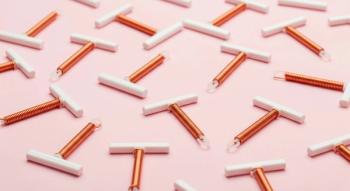
Botulinum Toxin A is Safe, Effect for Treating Detrusor Overactivity
In the largest study to date looking at botulinum toxin for this use, the agent was found to an effective and safe treatment option for detrusor overactivity (DO). The results can be found in European Urology.
In the largest study to date looking at botulinum toxin for this use, the agent was found to an effective and safe treatment option for detrusor overactivity (DO). The results can be found in European Urology.
Dr. Douglas Tincello, Senior Lecturer at the University and Honorary Consultant Gynaecologist at University Hospitals of Leicester NHS Trust, and colleagues conducted a double-blind, placebo-controlled randomized trial across 8 urogynecology centers in the United Kingdom. Women received 200 IU onabotulinumtoxinA (N=122) or placebo (N=118) injected into the bladder wall. Tincello and colleagues looked at voiding frequency per 24 hours as well as urgency and incontinence episodes and quality-of-life data at 6 months.
In comparison with patients who received placebo, patients who received onabotulinumtoxinA had a lower median voiding frequency. Tincello et al. found similar differences for urgency episodes and leakage episodes, with patients on onabotulinumtoxinA having better outcomes. In addition, patients on onabotulinumtoxinA fared better in terms of continence. However, patients on onabotulinumtoxinA also experienced some negative outcomes. For instance, these patients experienced more urinary tract infections and voiding difficulty requiring self-catheterization than their counterparts receiving placebo.
Tincello and colleagues were excited by these findings and their promise for clinical use. In a statement to the press, Tincello explained: “In patients treated with botulinum toxin the times of urgency dropped from six a day to less than one a day. Most excitingly, about 4 in 10 women become completely continent again after six weeks and a third were still continent again six months after treatment.” However, he noted that the effects of onabotulinumtoxinA appeared to wear off after about six months.
“These findings are important because many doctors have been offering this treatment to patients based on the information from previous studies in people with spinal injuries, and now we have accurate information on exactly what benefit is likely to be noticed after treatment and how common the side effects will be,” Tincello added. “I am very excited by our work; this bladder condition is very frustrating for me as a doctor, and botulinum toxin works so much better than the drugs we have. My patients have been delighted with how well it works, even with the chance of needing to use a catheter. Our study is the largest one completed without any involvement from the companies who make the drug and it is very satisfying to have contributed to finding out how effective the drug is.”
References:
Reference:
Tincello DG, Kenyon S, Abrams KR, et al. Botulinum toxin A versus placebo for refractory detrusor overactivity in women: a randomised blinded placebo-controlled trial of 240 women (the RELAX Study). Jan 5. [Epub].University of Leicester. Powerful treatment provides effective relief for urinary incontinence â new study. Press release. March 12, 2012.
Newsletter
Get the latest clinical updates, case studies, and expert commentary in obstetric and gynecologic care. Sign up now to stay informed.










